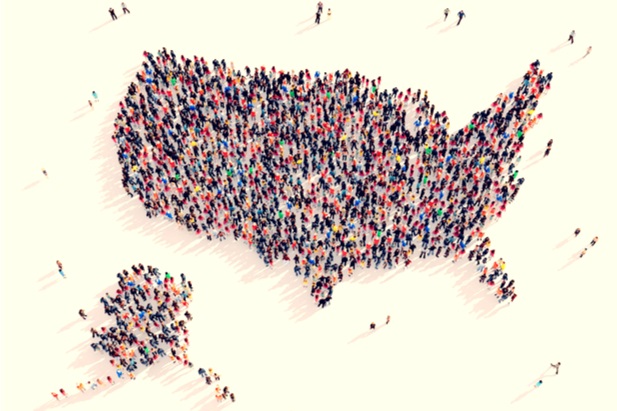 (Photo: Shutterstock)
(Photo: Shutterstock)
More than 19 million people have left their jobs since April 2021 as part of the Great Resignation, according to a recent report by McKinsey and Co. And the trend isn't likely to change anytime soon.
There's clearly a disconnect between employees and their companies, and HR professionals and organizational leaders need to re-evaluate the employee experience to ensure it's positive. Otherwise, they risk losing skilled workers to the competition.
Employee experience creates a ripple effect throughout organizations. A positive experience leads to happy, engaged employees who go the extra mile for customers. In contrast, a negative employee experience results in disengaged employees going through the motions until they can retire or find another job.
To truly improve the employee experience, companies need to understand how critical moments in the employee lifecycle affect employee moral. One way to do this is through employee journey mapping. Journey mapping can help improve organizational decision-making, build employee experience strategies, and optimize the key moments in an employee's tenure with the company.
What is employee journey mapping?
In the simplest terms, employee journey mapping is how organizations track the key moments in an employee's time with the company, starting with recruitment and ending with the exit interview. It covers onboarding, performance reviews, promotions, and everything in between, all in chronological order.
These experiences can be positive or negative and can shape the employee's feelings about the company. For example, a confusing onboarding process that requires multiple approvals just to access necessary company resources can leave the employee wondering if they made a mistake taking the job. On the other hand, an organized onboarding process that answers the new employee's questions can be motivating and set employees up for success early on.
Creating an employee journey map can be a valuable tool for HR professionals who want to identify where employees may start to feel disengaged. It can also offer insight into what companies are doing well and help companies optimize moments known to improve the employee experience. With the information gleaned from an employee journey map, HR professionals can improve employee engagement, performance, and retention by making the most of the moments that matter. Here are six steps to help HR leaders get started.
Making your map
1. Define and segment employee personas
Not every employee will have the same experience or the same journey. Employee journey mapping begins with understanding that a one size fits all approach will not work. Instead, define different employee segments based on their roles, levels of seniority, or experience. Then, complete the mapping process for each segment.
2. Gather feedback
Qualitative data regarding turnover rates in various departments or by years of tenure can help companies understand when and where employees start disengaging. But nothing compares to getting feedback directly from employees via surveys and conversations. This can include anonymous surveys and information from exit interviews, which can identify moments that impact the employee experience – moments that many may not have considered.
While employee experiences vary, the data gathered will help determine patterns and inconsistencies with key moments that can make a big difference. For example, some employees may have had a very supportive onboarding experience. In contrast, others did not receive adequate training for their roles. That initial experience will likely significantly impact their employee journeys, and knowing this can help organizations improve the onboarding experience.
3. Define moments that matter
Starting with one segment or persona at a time, identify key moments in their journey that shaped their experience for better or worse. A Stewart Leadership study found that the moments that most need improvements include initial experiences like the first day, onboarding, and training processes. Additionally, major transitions such as role expansion and promotion can also use an upgrade. Some other important moments in the employee journey include:
-
Job interview
-
Initial meetings with a manager or mentor
-
Performance reviews
-
Team events
-
Professional development events
-
Employee appreciation events
-
Restructuring within the organization
-
Exit
Other significant moments might include how the company responded to the COVID-19 pandemic or whether an employee was able to take enough parental leave.
4. Build a timeline
The moments that matter can then be placed into a visual chronology of the employee lifecycle for each workforce segment. While doing this, it's important to note which moments seem to drive the most employee engagement and which are crying out for improvements.
5. Use the insights to develop improvements
The insights from employee feedback will help identify which moments in the employee journey are the highest priority or have the most impact on employee engagement and retention. This is where HR professionals need to work with key stakeholders in the organization to develop solutions to the problems that have been identified.
6. Measure KPIs
No initiative can be successful if there's no way to measure it. Determine how the success of the proposed improvements will be measured, such as shorter wait times for log-in information, and align the measurements with the employee journey map. Organizations sometimes want to send surveys at key moments in the employee journey to capture contemporaneous feedback about onboarding or a professional development opportunity, instead of waiting for the employee's annual performance review. That feedback can be used to note whether the changes successfully improve the employee experience.
Related: How employers can address quiet quitting: Fix the performance review
Keep in mind that improving the employee experience is an ongoing process. The employee journey map is meant to be a living document that continuously evolves as the company and employee experiences change. But there's tremendous value in having a tool the organization can use to engage and retain good people.
Jason Romanosky is Senior Director of Product Marketing at LumApps.
Recommended For You
© Touchpoint Markets, All Rights Reserved. Request academic re-use from www.copyright.com. All other uses, submit a request to [email protected]. For more inforrmation visit Asset & Logo Licensing.






